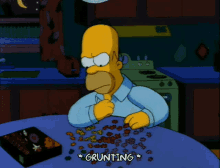
Posted on 03/13/2025 5:19:35 AM PDT by Red Badger

Mathematicians have proven that Henry Dudeney’s 1907 four-piece dissection of an equilateral triangle into a square is optimal. Using matching diagrams, researchers from JAIST and MIT showed that no three-piece solution exists, marking the first formal proof of optimality in dissection problems. Their work has applications in mathematics, engineering, and material sciences.
=======================================================================================
Researchers have demonstrated, using a novel approach, that the original solution to Dudeney’s famous dissection problem is indeed the optimal one.
In 1907, English author and mathematician Henry Ernest Dudeney posed a fascinating puzzle: Can an equilateral triangle be cut into the fewest possible pieces that can be rearranged to form a perfect square? Just four weeks later, he unveiled an elegant solution, demonstrating that only four pieces were needed. This method of cutting a shape into pieces and rearranging them to form another shape is known as dissection. A central challenge in dissections is minimizing the number of pieces required to transform one polygon into another—a problem that has captivated mathematicians, puzzle enthusiasts, and problem solvers for centuries.
Dudeney’s puzzle remains one of the most famous examples of geometric dissection. Beyond its appeal to mathematicians, dissection problems have practical applications in fields such as textile design, engineering, and manufacturing. More than 120 years after Dudeney’s solution, one question remains: Is it possible to solve the puzzle with fewer than four pieces?
A Groundbreaking Mathematical Proof
In a groundbreaking study, Professor Ryuhei Uehara and Assistant Professor Tonan Kamata, from Japan Advanced Institute of Science and Technology (JAIST), along with Professor Erik D. Demaine from Massachusetts Institute of Technology, have finally answered this question. They proved that Dudeney’s original solution was optimal.
“Over a century later, we have finally solved Dudeney’s puzzle by proving that the equilateral triangle and square have no common dissection with three or fewer polygonal pieces,” says Prof. Uehara. “We achieved this using a novel proof technique that utilizes matching diagrams.” Their study was published on the open-access repository arXiv on December 05, 2024, and presented at the 23rd LA/EATCS-Japan Workshop on Theoretical Computer Science in January 2025.

Dudeney’s original solution for transforming an equilateral triangle into a perfect square through dissection involves only four pieces, a solution that has now been proved to be the optimal solution. Credit: Erik D. Demaine from MIT, Tonan Kamata and Ryuhei Uehara from JAIST
==============================================================================================
In their study, the researchers proved a key theorem: There is no dissection between an equilateral triangle and a square with three or fewer pieces, when the pieces are forbidden to be flipped. Dudeney’s original solution also did not involve flipping. To establish this, the researchers first ruled out the possibility of two-piece dissection by analyzing the geometrical constraints of the problem.
Next, they systematically explored the possibility of a three-piece dissection. Using the fundamental properties of dissection, they narrowed down the feasible combinations of cutting methods for the three-piece dissection. Finally, they used the concept of a matching diagram to rigorously prove that none of these combinations for three-piece dissections were feasible, hence proving that a dissection between a square and an equilateral triangle cannot be achieved with three or fewer pieces.
The Role of Matching Diagrams
The matching diagram played a central role in their proof. In this method, the set of cut pieces used in the dissection is reduced to a graph structure that captures the relationship between the edges and vertices of the pieces, forming both the triangle and the square. The researchers found that this method is not only applicable to Dudeney’s puzzle but can also be applied generally to other dissection problems.
“The problem of cutting and rearranging shapes is said to have existed since humans began processing animal hides to make clothing. Such problems are also encountered in any situation where thin materials are used,” explains Prof. Uehara. “Our proof opens new horizons for understanding and solving dissection problems.”
Although many dissection problems have been solved by finding solutions with a certain number of pieces, there has never been a formal proof showing that a specific solution is optimal, using the fewest pieces possible. The technique developed in this study is the first to prove such optimality. “Our technique demonstrates that an optimal dissection is possible for real-world cut-and-rearrange problems. With further refinement, it could also lead to the discovery of entirely new solutions for dissection problems,” concludes Prof. Uehara.
Reference:
“Dudeney’s Dissection is Optimal” by Erik D. Demaine, Tonan Kamata and Ryuhei Uehara, 5 December 2024, arXiv.
DOI: 10.48550/arXiv.2412.03865
The study was funded by the Japan Society for the Promotion of Science.
Ping?.........................
What a relief!
I always just used a blender.
Wake me when bureaucrats accept that Milton Friedman had the optimal solution to debt & inflation.
I don’t feel so bad. I’m still working on my algebra homework.
Glad this is solved.
Now for that single red sock that is missing from my laundry.
[[Mathematicians have proven that Henry Dudeney’s 1907 four-piece dissection of an equilateral triangle into a square is optimal]]
Pffft, I coulda told them that decades ago, but no one bothered to ask me! (I kid, I am terrible at maths)

Had a dog that routinely ate socks. Get a new pair.
Tangrams were always fun...
Yeah, wth, it seems optimal to throw four pieces of equilateral caution to the winds and ping it.

The rest of the rather small 'geometry' keyword, sorted:
I can't tell you how many bar bets I've won because I knew this.
I don’t feel so bad. I’m still working on my algebra homework.
Well, my dog ate my homework.
A square has 4 corners. If you cut up an equilateral triangle trying to make a square you have to have at least four pieces.How else are you going to arrive at 4 corners?
Zero?
More winning from Trump!
Zero?
Wow! Right on the nose!
an equilateral triangle cut in to two pieces will produce 1 piece with 4 corners and 1 piece with 3 corners (one case - bisected - will produce to congruent triangles - each with 3 corners).
Disclaimer: Opinions posted on Free Republic are those of the individual posters and do not necessarily represent the opinion of Free Republic or its management. All materials posted herein are protected by copyright law and the exemption for fair use of copyrighted works.